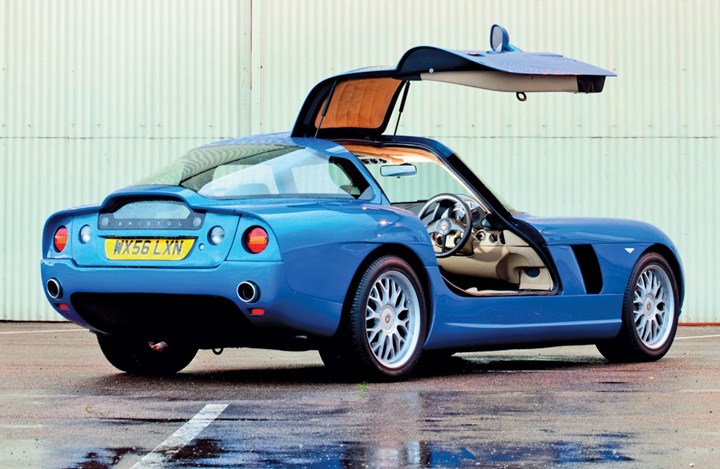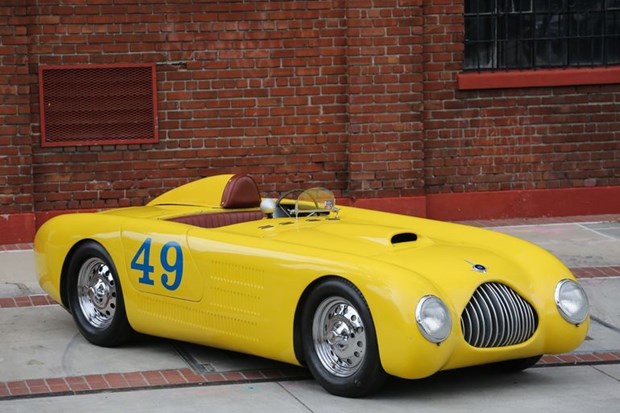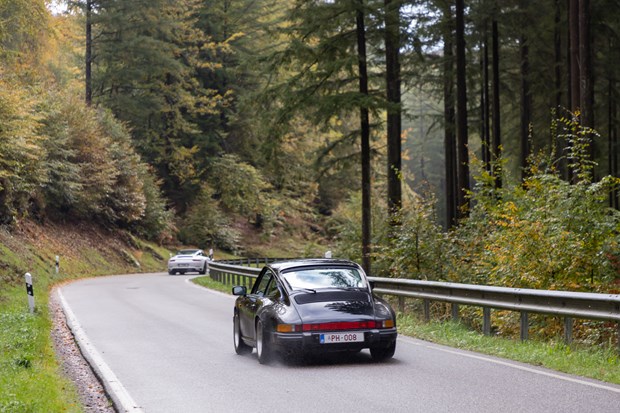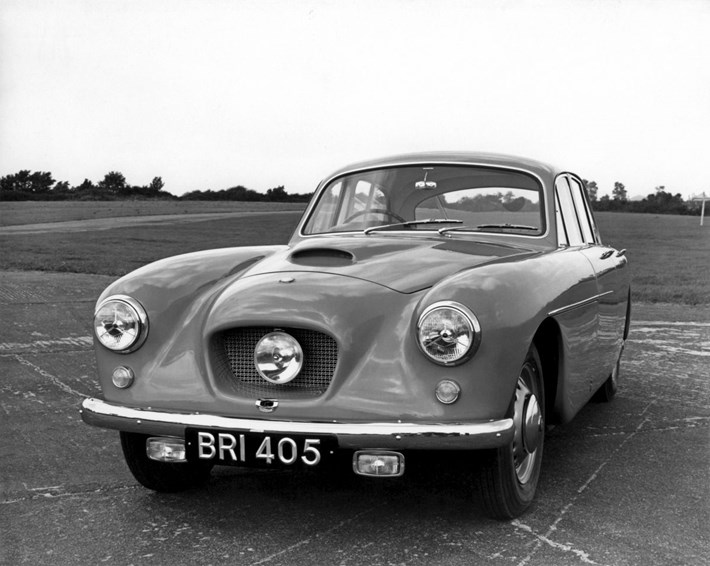
As one of many niche post-war British car manufacturers, Bristol distinguished itself with very exclusive, unique and aeronautically inspired products.
At the beginning of the Second World War, the BAC (British Airplane Company) was doing well by actively participating in the war effort. However, its directors anticipated the end of the conflict and wanted to diversify their activities. Amongst these, the company envisaged the construction of automobiles.
It was finally in 1945 that the company Bristol Cars was created. The company used original BMW engines distributed in the UK by Frazer-Nash to power its cars. It was not until 1947 that the first model was presented at the Geneva Motor Show: the Bristol 400, a car based on a chassis inspired by the BMW 327, equipped with a 2-litre 6-cylinder engine.
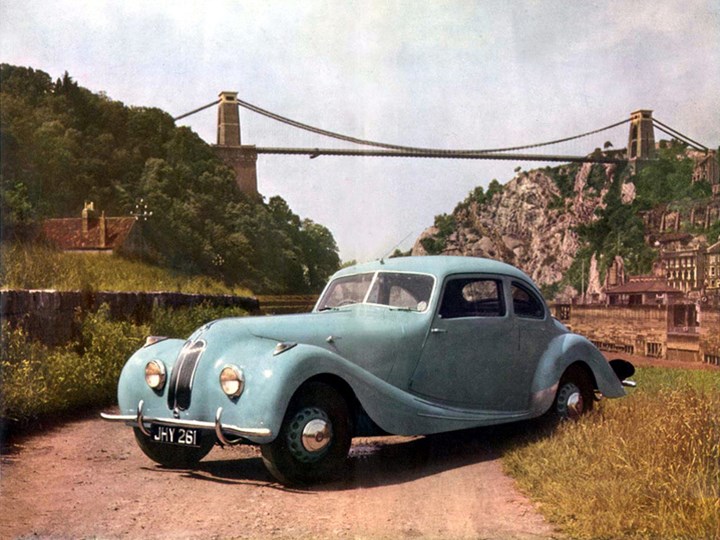
Technological refinement
This intriguing car quickly found its public and 487 examples were produced until 1950. The 401, then the 402 replaced it and were distinguished by their particularly streamlined lines which gave them a drag coefficient of only 0.36, very impressive for the time. Equipped with a Superleggera tube structure, they were technologically quite advanced.
As the years went by, they evolved further, their BMW engine became more powerful, and performance constantly improved. Launched in 1953, the 404 marked the end of the "BMW" grills. It was not until 1961 that the 406 ended its career and marked the end of the use of the BMW engine, the initial design of which dated from before the war!
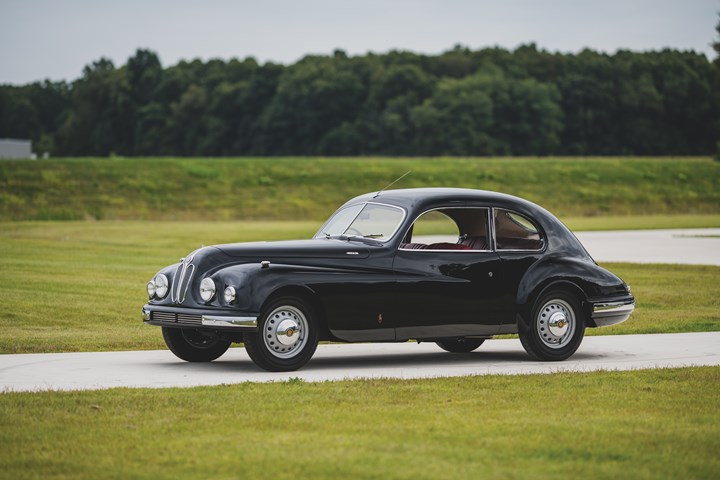
V8 Chrysler
Without changing its style, the 407 (launched in 1961) ushered in a new era when Bristol used Chrysler V8 engines. These enabled the small brand to match the more established competition in terms of performance. Inspired by aeronautics, the Bristol had two hatches in the front wings to accommodate the battery on one side and the spare wheel on the other, for better weight distribution.
With the American engine, Bristol finally adopted the automatic gearbox, a move that opened new doors for the manufacturer. In the mid-1970s, the look of the 411 was becoming quite old-fashioned, which is why the 412 was designed to be totally different, with a very angular targa cabriolet body. Manufactured by Zagato, the body was then assembled on a "Made in UK" chassis.
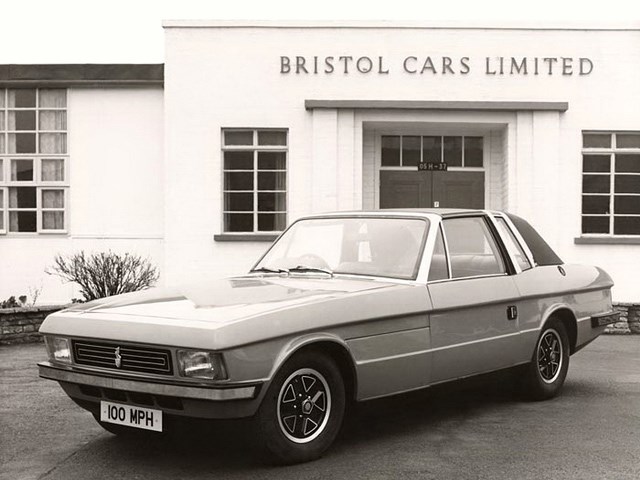
Developmental Issues
Even if the models followed one another, there were no real innovations at Bristol, which preferred to evolve its vehicles at a glacial pace. While the brand became independent from BAC in 1960, it was gradually acquired by Anthony Crook, who was its distributor. He set up the Kensington showroom in London, which became Bristol's only outlet dealing directly with its customers.
This very particular sales system and Crook's charisma led to a loyal clientele, looking for exclusivity and eccentricity. The 603 marked a new step towards a singularity that further limited the Bristol market. This is the model on which the brand's cars were based on until 2011.
The styling took on awkward proportions and the technologically outdated V8 engine (an LPG option was offered to curb the rampant fuel consumption) both contributed to a dwindling customer base. In 1997, Crook sold half of the company's shares to a consortium led by Toby Silverton.
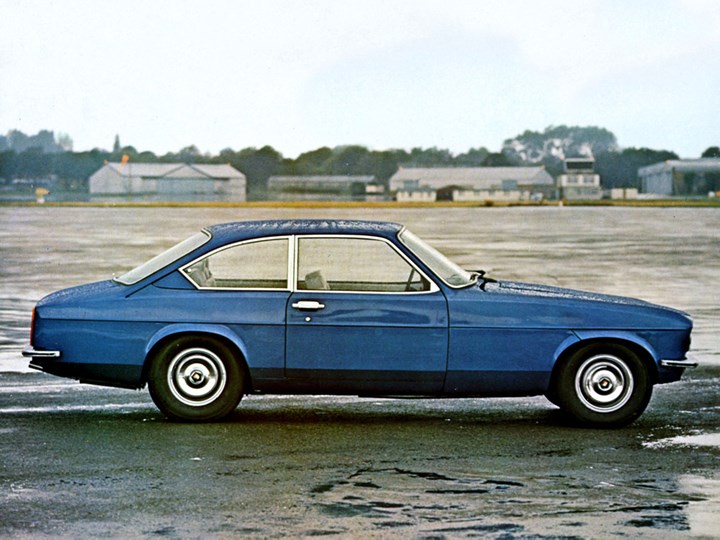
Final Attempts
To save the sinking ship, the two men came up with the Bristol Fighter, a coupe with gullwing doors powered by the Dodge Viper V10. It wasn't until 2004 that the car was finally produced, after Silverton had acquired the rest of Crook's shares. The first Bristol to abandon the separate chassis, the Fighter benefitted from a carbon body.
Sold at a price of £250,000, it made a strong impression and gave the brand a new image. Unfortunately, it did not sell well and only 9 or 16 examples (figures vary according to sources) were produced. In 2011, Bristol went bankrupt. Fortunately, the Kamkorp group relaunched the company with big projects such as the launch of a hybrid saloon (unfortunately, this car never saw the light of day) and the Bullet, a car with a decidedly retro look.
The latter was to use a BMW engine and was to be produced in 70 units. Despite a few orders, the company was sorely lacking in resources and production was delayed. Finally, Bristol went bankrupt in 2020. Today, the Bristol Owners Club keeps the maruqe alive and helps owners keep their quirky British cars on the road.
